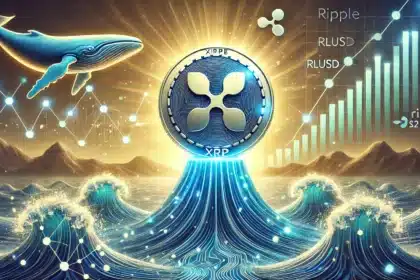Ethereum gas fees have reached new lows as the price of Ethereum continues to fall. On August 18, according to a post on X, the daily mean gas price on the Ethereum network dropped to an all-time low of 2.9 Gwei, which is roughly $0.026. This decline comes as the price of Ethereum dipped below $2,600, raising concerns across the market.
The recent drop in ETH gas fees has been closely tied to the Dencun upgrade. This upgrade, launched in March, allowed layer 2 networks to process their data on the Ethereum mainnet, leading to a significant reduction in fees. The Ethereum gas fees have been a hot topic since this upgrade, as it has greatly impacted how transactions are processed on the network.

Before the Dencun upgrade, Ethereum gas fees were higher, often causing frustration among users. With the introduction of this upgrade, ETH gas fees saw a drastic decline, making it more affordable for users to transact on the network. However, the CryptoQuant analyst has warned that this drop in fees might not be all positive. The analyst pointed out that while lower fees are good for users, they could lead to issues like user and liquidity fragmentation in the long term.
The analyst also highlighted that despite the approval of spot Ethereum exchange-traded funds (ETFs) in the U.S., Ethereum’s supply has increased by 197,000 tokens. This increase, coupled with the 35% drop in price, raises questions about the future stability of Ethereum gas fees and the overall health of the Ethereum network.
Ethereum Gas Fees and Declining Whale Activity
Another factor contributing to the current state of Ethereum gas fees is the declining activity among Ethereum whales. Data from Santiment shows that the number of whale transactions, which involve at least $100,000 worth of Ethereum, has been steadily decreasing over the past week. On August 12, there were 5,371 such transactions, but by the time of reporting, this number had fallen to 2,138.

The decline in whale activity has a direct impact on the gas fees. As fewer large transactions are made, the overall demand for network resources decreases, leading to lower fees. This trend has been concerning for some analysts who fear that reduced whale activity could signal a lack of confidence in the market.
With Ethereum gas fees at record lows and whale activity on the decline, the Ethereum network is facing a period of uncertainty. The combination of these factors has many in the community wondering what the future holds for Ethereum.
Ethereum Gas Fees: What Lies Ahead?
As the gas fees continue to decline, there is growing concern about the potential long-term effects on the Ethereum network. While lower fees are beneficial for users, they may lead to problems down the road. The CryptoQuant analyst’s warning about user and liquidity fragmentation cannot be ignored, especially as the Ethereum network undergoes significant changes.

Ethereum’s price has been on a downward trend, trading at $2,580 at the time of writing. Despite this, its daily trading volume has increased by 32%, surpassing the $10 billion mark. This increase in trading volume suggests that while the price is falling, there is still significant interest in Ethereum. However, the future of the gas fees remains uncertain.
Ethereum Gas Fees at a Crossroad
In conclusion, Ethereum gas fees are at a critical point. The recent drop in fees, combined with declining whale activity, has left the market in a state of flux. As the Ethereum community navigates these changes, the focus will be on how these factors influence the network’s future. Will the gas fees remain low, or will we see a rebound? Only time will tell, but one thing is certain: the situation demands attention. Stay connected to The BIT Journal for all the latest developments and insights on Ethereum gas fees and more.





























